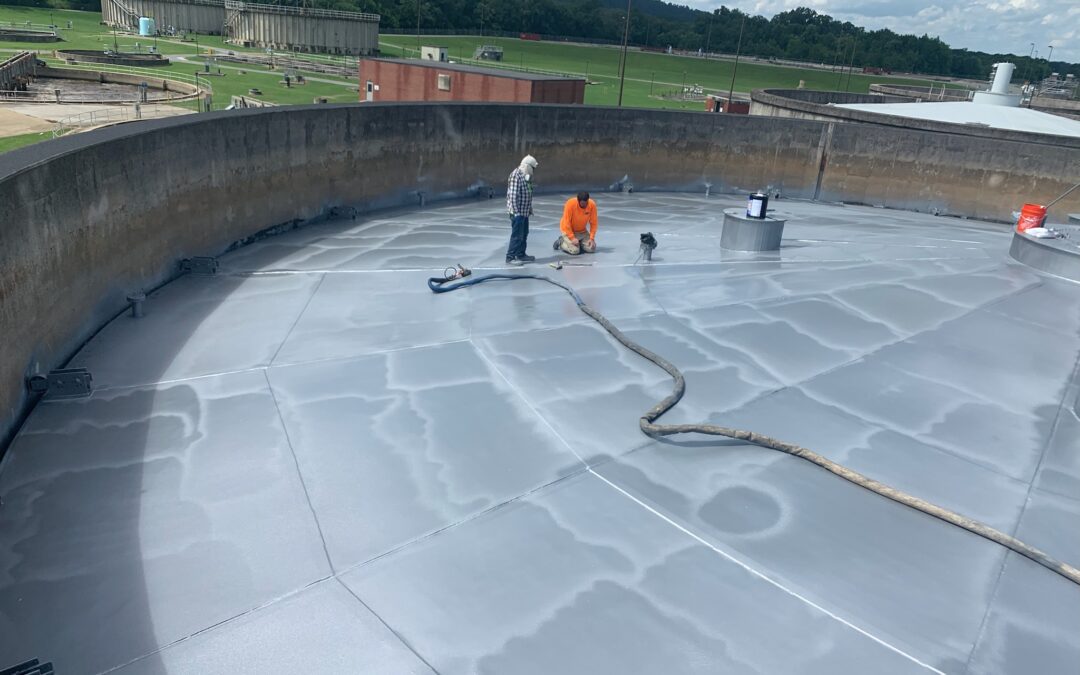This blog post takes us through the importance of proper Tank maintenance to maximize cost savings over time. We also want to showcase a recently finished project where Southern Industrial Linings completed another job well done for the city of Rome, Georgia.
More detail on the completed work, to follow below.
While commercial tank applications include different materials, the most common material used to build storage tanks is steel, primarily because of its tremendous strength, but that strength does not make it impervious to the damaging effects of corrosion. In many cases, it is necessary for tanks to be given protective coatings to help avoid corrosion and extend the service lifespan.
The biggest advantage? Tank liners can be used, which delay or prevent the damaging corrosive effects that chemicals may have on steel. While smaller tanks can be built out of fiber-reinforced plastic (FRP) tanks to eliminate the corrosion possibility altogether, this is generally not an option for larger tanks. When it’s time to repair steel storage tanks that have been damaged by corrosion, the first thing we tackle is abrasive blasting which will remove the corrosion, before preparing the surface and applying a superior tank-lining product.
Understanding the impact of Tank Corrosion:
The cost of corrosion in liquid and water storage tanks costs companies billions of dollars every year in the US, yet the cost is not the only consideration. Because there are often flammable and hazardous substances stored in tanks, there is a risk to the environment, as well as to humans when the integrity of a liquid storage tank is compromised.
When a protective coating is applied to a tank, a barrier is created between the tank surface and the environment, so that corrosion’s impact can be minimized. If no coating were to be applied, persistent corrosion would eventually cause fatigue or failure and could lead to leaks along those lines. Eventually, the problem would become severe enough that a storage tank would have to be replaced completely. The last thing you want is the demolition, removal, and potentially massive cleanup involved.
As any coating is applied it can be affected by moisture, oil, dust, and fumes, so minimize them to the greatest extent possible. Note any sharp edges, as coatings tend to pull away from seams and edges. Edges must be ground down to improve the effectiveness of adhesion and coverage of the tank surface.
It is truly in the details! Less than optimal prep conditions can lead to poor adhesion, degradation of the surface, and accelerated aging. We go through an extensive surface cleaning and preparation process.
Southern Industrial Linings always ensures proper techniques and methods are used one hundred percent of the time because applying a good coating can add years of service to your storage tanks.
Lastly, as promised, here is the overview of our work with the city of Rome.
In October, Southern Industrial Linings completed a job for the City of Rome, Ga. The job spanned 6 weeks and consisted of sandblasting, prepping and coating a floating steel digester tank lid.
The work was requested on behalf of the client to protect the new steel lid. There were three phases of the project during the six-week time frame, each with its own challenges and objectives.
- The initial phase was the outside rooftop coating which needed to withstand weather elements and UV degradation.
- The second phase was the interior of the lid, needing a robust coating system to mitigate corrosion from the high-humidity environment.
- The final phase was the underside of the lid which faces the most aggressive environment. This highly chemical-resistant coating is needed to withstand the attacks of H2S gas and high heat from the anaerobic digesting process.
We were able to meet all these requirements with our extensive line of polyurea coatings.
See images in our photo gallery on our website! Reach out here if you have any questions or if you need help tackling a similar project.
The Team at Southern Industrial Linings


